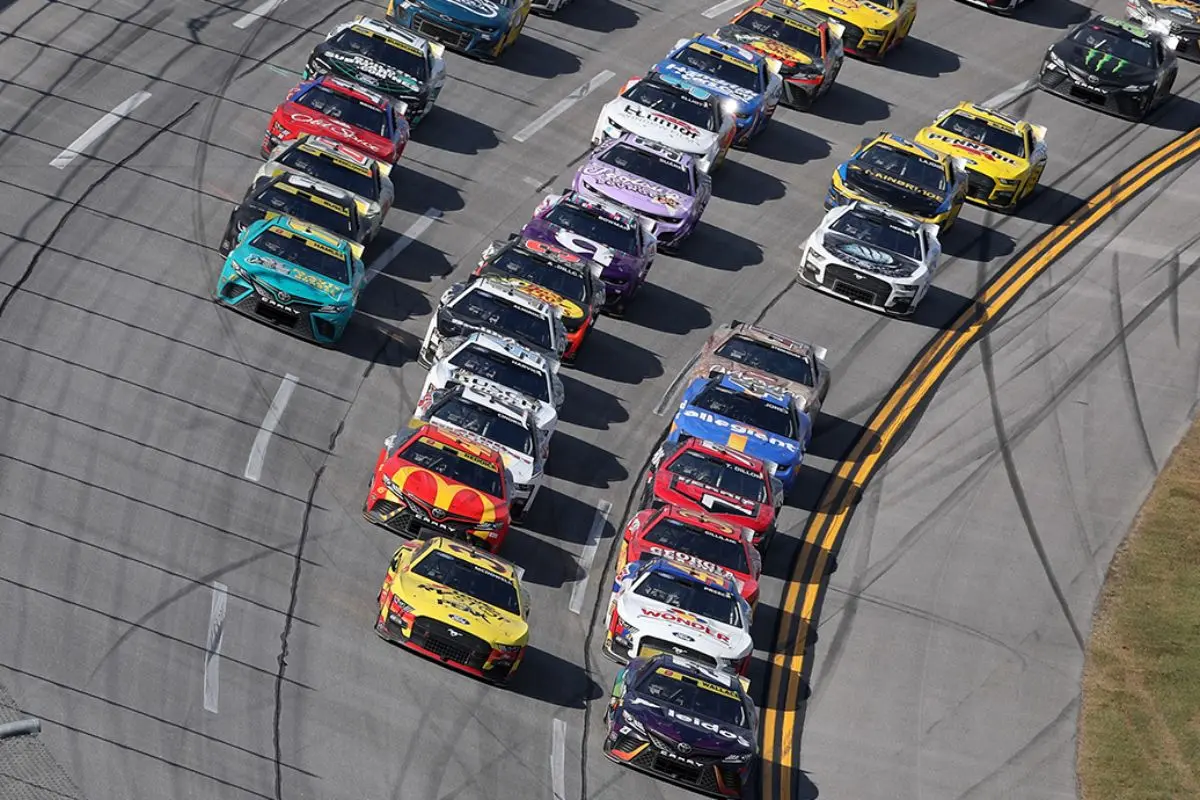Overtime in NASCAR has become a hot topic, leaving fans divided. Some love the extra thrill, while others think it’s too much drama. It can change the whole race in the final laps, keeping fans on the edge of their seats. But is it really adding excitement, or just making things more chaotic? The debate is heating up, and it’s clear that not everyone agrees on whether Overtime in NASCAR is a good thing.
Key Highlights
- Overtime in NASCAR was introduced in response to fan dissatisfaction with caution finishes, particularly after Dale Earnhardt Jr.’s controversial 2004 defeat.
- The Green White Checkered rule was implemented at Talladega in 2004, allowing a single attempt to finish under green and enhancing race dynamics.
- Challenges during the 2015 season led to the introduction of the “Overtime Line” in 2016, allowing unlimited attempts under specific conditions.
- The Overtime Line was repositioned to the start-finish line in late 2017, maintaining the unlimited attempts format and increasing excitement in races.
- Fans have had mixed reactions to Overtime, balancing thrilling finishes with concerns over race integrity and consistency in rule enforcement.
Introduction to the Overtime Controversy
The introduction of overtime in NASCAR racing has sparked considerable debate among fans and participants in a similar manner, highlighting the delicate balance between competition and fairness. This controversy is rooted in historical context, particularly marked by Dale Earnhardt Jr.’s narrow defeat in 2004, which served as a catalyst for new rules surrounding race finishes.
NASCAR fan reactions to overtime often oscillate between excitement and frustration, as the unpredictability of late-race scenarios can dramatically alter the outcome.
Overtime approach implications have since become a focal point for drivers and teams, as the potential for extra laps creates both opportunities and challenges. Drivers express varying opinions on the merits of overtime, with some appreciating the added thrill while others argue it diminishes the integrity of a race’s finale.
The race finish excitement associated with overtime can lead to exhilarating moments, but it also introduces a level of chaos that raises questions about fairness.
As the debate continues, understanding the historical roots and tactical complexities of NASCAR’s overtime rules remains crucial for fans and participants together, illuminating the sport’s evolving nature in pursuit of both competition and equity.
The 2004 Talladega Speedway and the Green White Chequered Rules
Introducing the “Green White Checkered” rule at the 2004 Talladega Speedway marked a vital shift in NASCAR’s approach to race outcomes. This groundbreaking regulation aimed to address fan dissatisfaction stemming from numerous Talladega finishes that wrapped up under caution, greatly diminishing on-track excitement. By introducing the possibility of a green flag restart, NASCAR sought to improve driver reactions and fan expectations during tense race conclusions.
The implementation of this rule also reflected heightened safety concerns, as previous practices of racing back to the start-finish line under caution posed risks to competitors. The tactical use of the Green White Checkered format allowed a single attempt to finish under green, altering race dynamics and promoting aggressive green flag strategies.
The Evolution of Overtime Rules (2015 to 2016)
Evolving from the challenges faced during the 2015 season, NASCAR’s overtime rules underwent considerable changes in 2016 to improve race outcomes and address safety concerns. The previous year had highlighted notable overtime implications, particularly during the chaotic fall race at Talladega, where a single Green-White-Checkered attempt raised questions about race strategy and the integrity of the playoffs.
The introduction of the “Overtime Line” in 2016 marked a crucial shift, allowing for unlimited attempts under specific conditions. This evolution aimed to improve rule clarity and mitigate contentious scenarios.
Key aspects included:
- Unlimited Overtime Attempts: Drivers could race beyond the traditional limit, promoting competitive finishes.
- Caution End Conditions: Once cars crossed the Overtime Line, a caution could conclude the race, ensuring clarity regarding when laps counted.
- Fan Reactions: Increased excitement and engagement were observed, as fans appreciated the potential for dramatic finishes.
- Playoff Impact: The new rules considerably influenced playoff outcomes, demanding tactical adjustments from teams and drivers.
Adjustments to the Overtime Line and Current Rules (2017-2024)
Adjustments to the Overtime Line and current rules from 2017 to 2024 reflect NASCAR’s ongoing commitment to enhancing race integrity and viewer engagement. In late 2017, the Overtime Line was repositioned to the start-finish line while retaining unlimited attempts, effectively echoing the race finish protocols from 2004 to 2015. This change has led to exhilarating outcomes, exemplified by the memorable 2022 Daytona 500.
However, the system is not without its challenges, as evidenced during the 2024 Daytona 500, where a wreck triggered a caution immediately after the white flag, culminating in a race finale under caution. This scenario highlights the caution flag implications inherent in the rules, as NASCAR endeavors to create a genuine green flag finish.
Drivers must adapt their strategies accordingly, knowing that after the white flag, the subsequent flag—be it a caution or checkered—will determine the race outcome.
Fan reactions continue to shape the discourse surrounding these adjustments, with many enthusiasts advocating for improvements that maintain excitement while also ensuring the integrity of the sport. The ongoing evolution of these rules will certainly influence future racing dynamics.
Fans’ Acceptance and Ongoing Controversy Over Overtime
The concept of Overtime in NASCAR has elicited a mixed response from fans since its inception in 2004. While many have come to accept this rule as a means to boost excitement, a portion of the fan base remains skeptical, raising concerns about the implications for race duration and tactical dynamics.
Key factors influencing fan reactions include:
- Emotional Impact: Overtime often intensifies the emotional stakes, leading to exhilarating finishes that can energize fan engagement.
- Race Strategies: Teams have adapted their strategies, learning to navigate the uncertainty of Overtime, which adds layers to race tactics.
- Rule Enforcement: The consistency of rule enforcement during Overtime has sparked debate, with fans questioning whether officials apply regulations uniformly.
- Historical Comparisons: Some fans nostalgically compare Overtime to traditional racing formats, arguing that it undermines the integrity of the sport’s historical roots.
News in Brief: Is Overtime in NASCAR Too Much Drama
The introduction of NASCAR’s Overtime format, stemming from the 2004 season and the controversial Talladega finish, represents a notable evolution in race dynamics. The Green White Checkered rule aimed to improve excitement, yet it sparked ongoing debates regarding the integrity of competition. Subsequent adjustments to the Overtime Line and rules have further shaped this aspect of racing. Fan reception remains mixed, highlighting a complex relationship between exhilarating finishes and the preservation of traditional racing values.





